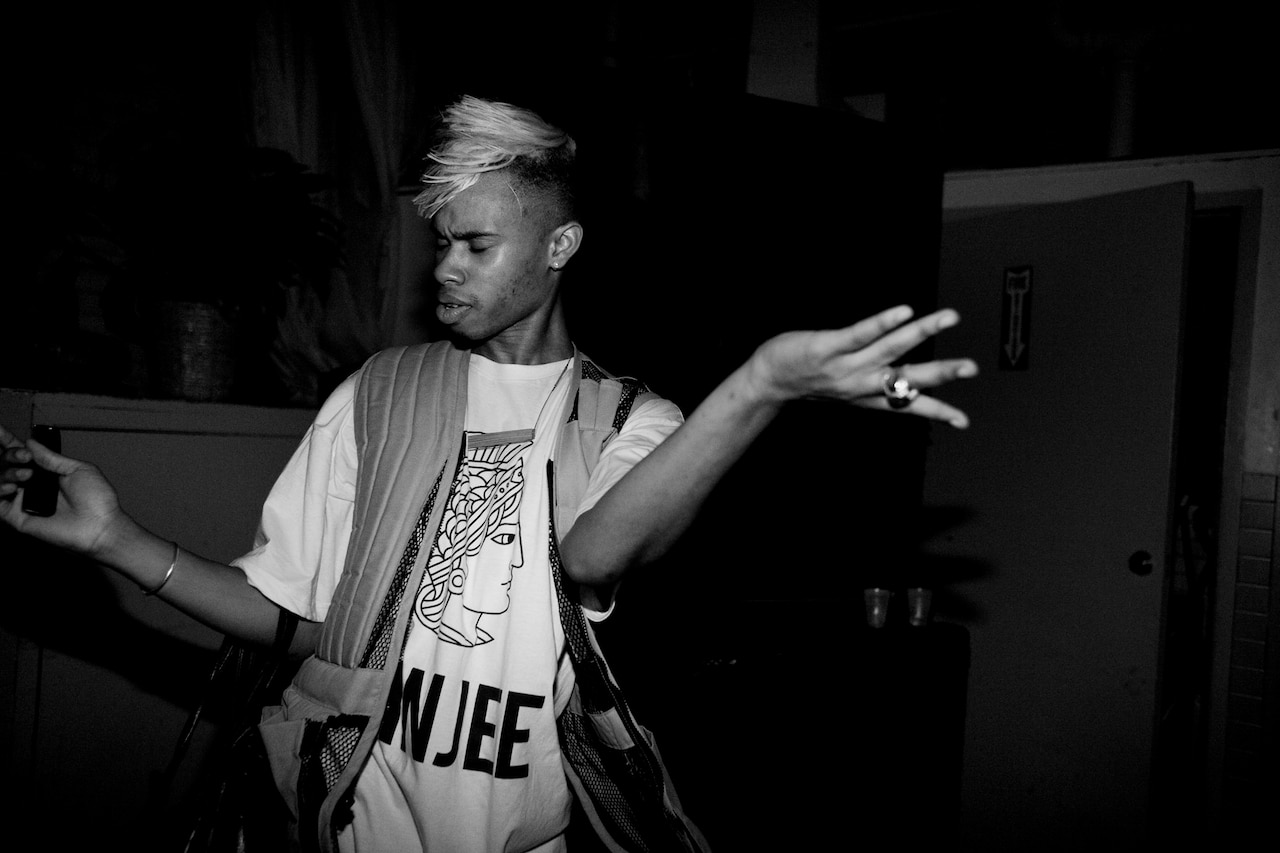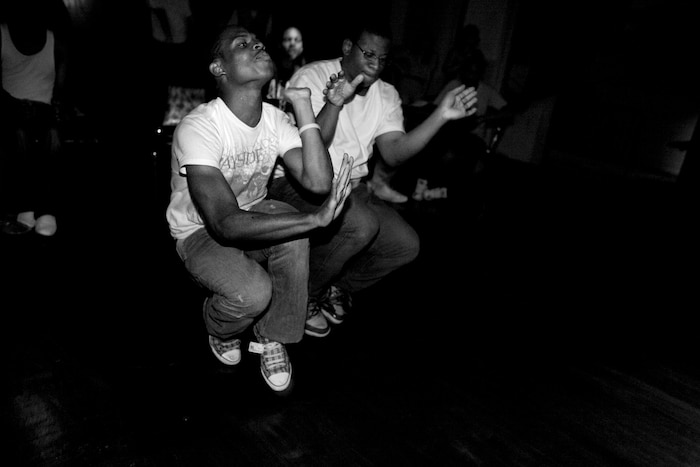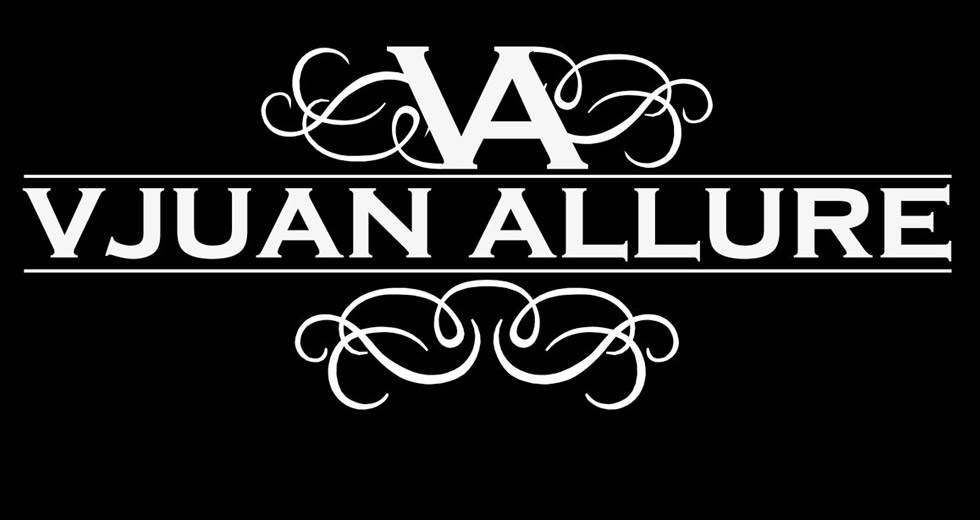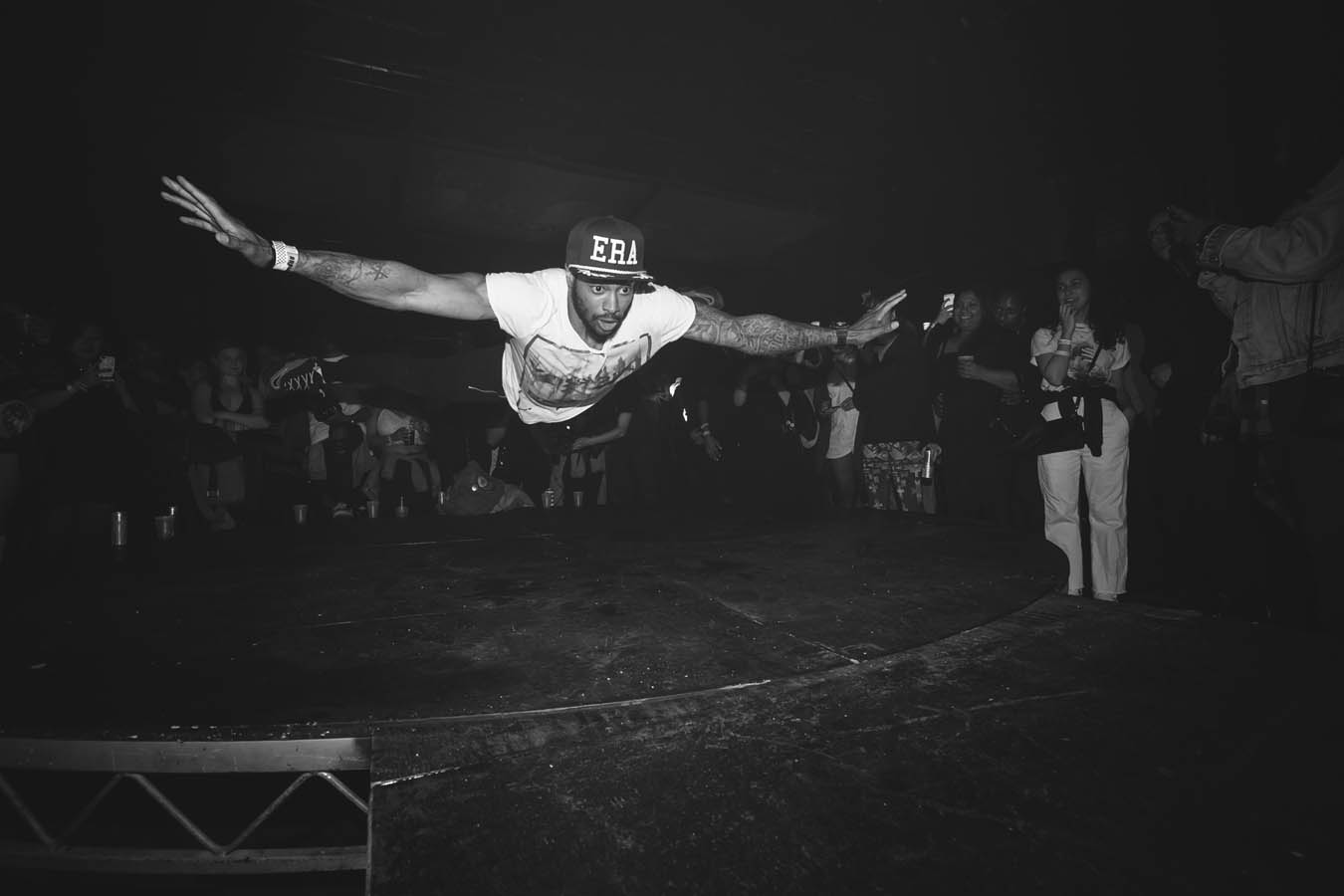New York Is Burning: Vogue’s Move from Ballroom to Limelight
Distilled to its core voguing is ultimately about the look: having it, giving it, working it.
Although it’s usually difficult to pinpoint the exact moment a street movement becomes a worldwide phenomenon, voguing’s roots in the mainstream can be traced to a single street address: 72 Thompson, a boutique in Soho where, in 1981, Swiss culture-maven Susanne Bartsch first started importing high-end clothing for nightlifers. (She would eventually expand to 465a West Broadway with help from silent partner Peter Gatien, the notorious proprietor of New York clubs like Limelight and Tunnel.) Decorated “like a Dali-esque funeral parlor,” according to fashion iconographer Simon Doonan’s Wacky Chicks, Bartsch’s store was the first place in New York City to sell clothing by then-burgeoning London avant-garde designers like John Galliano and Vivienne Westwood.
Whatever was new and fashionable, the voguers coveted. Cutting-edge designs went a long way on the vogue runway, down which those with the most stylish walk, dance and face won trophies and prizes – but most of all bragging rights – at drag balls that took place first in Harlem, then all over the city. Because many of those in the mostly poor, gay, trans, black and/or Latino ball scene weren’t moneyed enough to pay for a Galliano gown, they would descend on Bartsch’s stores to shoplift the next-level pieces she stocked. They’d drape themselves in designs that sparkled and flowed as they fashion-posed for uptown fame.

Bartsch, familiar with “mopping” (stealing in drag parlance), learned to recognize her own grifted garments on the vogue-ball runways. “I would go to the balls,” she laughs, “and they would be wearing the items they had mopped from me!” Rather than disassociate with ball culture and the disadvantaged fashionistas who appreciated her taste, Bartsch felt her calling was to be in nightlife. Inspired by her “shining star” – the legendary vogue dancer Willi Ninja – she organized the Love Ball, the event that set off the fuse that exploded voguing all over the world. “I was blown away by the way this extremely socially and economically challenged community overcame their obstacles,” says Bartsch. “They transformed potential roadblocks into brilliant creativity, art, beauty and success.”
Where balls had been held mostly in Harlem community centers... the Love Ball’s competitions were now being judged by the likes of supermodel Iman.
Staged on May 10, 1989, the Love Ball was a high-end, celebrity-studded charity affair to raise funds for the Design Industry Foundation for AIDS. It was the first large-scale vogue ball that exposed outsiders to the culture en masse. Where balls had been held mostly in Harlem community centers or, on occasion, Midtown clubs, the Love Ball’s competitions were now being judged by the likes of supermodel Iman and Vogue magazine’s editor-at-large Andre Leon Talley. Never before had so many of New York’s wealthy and elite been exposed to ball culture.
Legend has it (and Susanne Bartsch agrees) that the Love Ball was where Madonna saw voguing for the very first time. They raised $400,000 for AIDS research that night. Chi Chi Valenti, a journalist and the “Brooke Astor of New York nightlife” (as Marc Jacobs called her), would write in the program for the Love Ball’s 1991 sequel that the first event was “simultaneously a massive coming-out party for the uptown ball culture, and the end of a certain naiveté that had been inherent in that culture.” A year later, Madonna would release “Vogue,” with a David Fincher-directed video starring Ninja and voguers Jose and Luis Xtravaganza of the House of Extravaganza. Another Love Ball judge, Talking Heads’ David Byrne, told The New York Times, “It was kind of confusing. I saw things I never saw before.”

What Byrne saw then, and what he might see at a ball now, are two entirely different animals. Ball culture has traced an unexpected path: voguing went from underground balls at local VFWs to dancing with Madonna on the Billboard charts before diving back underground. In 2008, the culture began bubbling up outside itself once more – interest is presently at its height, mostly owing to the increasing popularity of vogue house DJs like MikeQ and Vjuan Allure.
Consequently, voguing has branched out as well, split up into subcategories of style and execution for the purpose of the dance battle. Vogue Femme and Vogue Dramatics are two of the most popular categories among younger voguers today, while Old Way and New Way are categories that delineate specific eras. Old Way, the fundamental platform of voguing, developed in the 1970s with poses cribbed directly from the extreme modeling in Vogue – hands on hips and elbows out in a turkey splay – but always incorporating balletic grace, Fred and Ginger’s creamy swiftness, and the strength and vim of martial arts. An Old Way voguer sliding down the runway might punctuate a catwalk with a pop, dip and spin.
It was kind of confusing. I saw things I never saw before.
New Way began developing in the 1990s and is more gymnastic than Old Way, with emphasis on elasticity and floor moves that incorporate splits and other leg contortions. With Vogue Femme, there are fluid moves like the duckwalk, a plié shuffle accompanied by butterflying hand language – its lucid femininity makes it especially appealing. “When you get into vogue categories, there are so many guidelines and rules for Old Way and New Way. Voguing Femme has more expression and elements to it, and a lot more people can do it because it’s more interpretive,” explains Vjuan Allure, who’s been DJing balls since 1999 and invented the mutation of Masters At Work’s “Ha Dance” (sometimes known as the “Allure Ha”) that most voguers still move to in 2013.

If Femme is the least rigid, Vogue Dramatics is the flashiest style, and the one that most of America would recognize, thanks in part to Leyomi Mizrahi’s acrobatic, star-turn suicide dips (also known as “sha-blams”) on 2009’s America’s Best Dance Crew, which gave voguing its most visible mainstream platform since 1993 or so. Though Madonna had given vogue an unprecendented level of attention, the shallow exposure ultimately positioned it as a fad. Because most of America thought voguing was simply a dance – and weren’t invested in the culture from whence it came – it fell away from mass consciousness almost as quickly as it came.
For some, this was fine: drag-ball culture had flourished since 1920s Harlem, and a lack of interest in voguing from outsiders didn’t change its path. But it had its own negative effects. As DJ Sprinkles wrote in the liner notes for his 2009 exegesis “Ball’r (Madonna-Free Zone),” “[Madonna] had taken a very specifically queer, transgendered, Latino and African-American phenomenon and totally erased that context with her lyrics, ‘It makes no difference if you’re black or white, if you’re a boy or a girl.’ Madonna was taking in tons of money, while the Queen who actually taught her how to vogue sat before me in the club, strung out, depressed and broke.”

“What do you get out of [sha-blamming]? Slamming your fucking body on the floor,” laughs Michelle Visage. Where there is history, there will be traditionalists. Visage was first taught to vogue by Willi Ninja in the mid-’80s and, with the House of Ninja, was the first-ever biological woman to walk in a vogue ball. (True to her name, she was a face-and-body queen, and she often won her categories.) “Not to take away anything from these kids, and there is a talent to it, but I think there is not as much thought into it [now]. You gotta evolve, but where it came from is missing in New Way. Voguing has a base – it’s emulating models in a magazine. I think that’s really where my problem is. If somebody can morph the two, and keep some of the old aspects with the new sha-blamming death drop, that could be really interesting.”
Willi Ninja had the foresight to know that voguing could be preserved as an important American art form.
Visage still does Old Way, and performed in clubs several times a week through the ’80s, while both attending college and being the bleached-blonde lead in the freestyle trio Seduction. (Madonna once accused Visage of trying to steal her look, though watch the video for 1989’s “It Takes Two” – which is full of voguing – and it seems like it might be the other way around.) Some of the New Way acrobatics – and, to some, the de-purification of the dance – point back to its mainstreaming, as well as more formally schooled dance students joining the culture. Salim “Slam” Gauwloos was one of them, a young professional dancer who joined Madonna’s troupe and became the handsome white face of her “Vogue” video. Jose Xtravaganza taught him the moves, which Slam now incorporates into his contemporary dance classes at Alvin Ailey Extension School. Most recently, a Longchamp ad starring supermodel and dancer Coco Rocha gave a touch of secret Old Way and catwalking to high-end handbag consumers.
The mainstreaming of vogue was always something Willi Ninja saw from the corner of his eye. After Madonna’s house hit blew up, his dancing and style a crucial part of it, he became a fixture in music videos and walked the runway for Jean-Paul Gaultier. Most significantly, Ninja was the first voguer to bring the dance to an institutional-art level when he collaborated on postmodern works with choreographer Karole Armitage. He would later perform with Doug Elkins at the Joyce Theater, and take his work “The House of Ninja” to Summerstage in Central Park and to the prestigious Théâtre de Suresnes Jean Vilar at the Sorbonne in Paris. Ninja, who passed away in 2006 from AIDS-related heart failure, is remembered not just because he was one of the most beautiful dancers ever, but because he had the foresight and confidence to know that voguing could be preserved as an important American art form. Mainstreaming ball culture didn’t have to be solely about commerce.
I think the reason voguing remained underground was because it was tied to the black and Latino gay community.
In the 21st century, painter and performance artist Rashaad Newsome understands this as Ninja did, and is a descendant of his legacy, preserving voguing and ball culture in institutions as much as possible. In 2010, Newsome brought voguing to the Whitney Museum via a multimedia performance and through two videos that showcased New York voguers Shayne Oliver and Twiggy Prada exhibiting Vogue Femme and New Way styles. “I think the reason voguing remained underground was because it was tied to the black and Latino gay community,” says Newsome. “The vogue scene came out of a need for a safe space for the black and Latino gay community to express themselves... As an artist, I feel that the practice of vogue is very much a part of performance-art history, and as museums care for, conserve and collect artifacts and objects of artistic, cultural, or historical importance, I can think of no place better for the pieces to live.”
The first time Newsome ever saw anyone voguing, it was 1993. He was 17, at a house party and over the moon. “I was a huge hip hop fan and I had never seen anyone ‘break’ like that,” he says. Though breakdancing and voguing are two entirely different styles set to entirely different music (hip hop and house, respectively), there was a time in the 1980s when the two intersected and informed each other.

Long before the dances were immortalized in museums and NYC’s hallowed dance halls, they criss-crossed on the streets and, most significantly, the clubs. The locus points were multigenre venues: voguers were at Red Zone, The Underground/The Sound Factory, Latin Quarter and Escuelita; they bumped up with b-boys at The Loft and, later, The Tunnel. “Straight up, it all came up in the clubs and the streets,” says Jonathan Lee, who learned to dance from Robin Dunn, Crazy Legs and Mr. Wiggles, and now teaches hip hop dance at the Alvin Ailey Extension School. “Especially with voguing culture and the gay community, but people would dance in the club the way they wanted to dance. That’s where everyone could and can meet. People in the club are gonna dance regardless of their style. Even now, people who are lockers will lock to the music and voguers will vogue to the music – it just comes down to the DJ. At the club you can find everyone.”
The Loft during the 1980s was the most significant intersection of b-boying and voguing, in which breakers and banjee boys – gay men who dress socio-typically “masculine” – would combine elements of Old Way and popping and locking, creating a still-enduring style known as “lofting.” But in the late 1980s, as b-boying’s popularity waned and voguing’s phased in, the denizens passed each other on the way.
As voguing has been codified in museums and commercials, one important aspect to Newsome is how its past speaks to its future, and vice versa. “My interest in vogue is how it functions as a language that is constantly in a state of flux,” he says. “One cannot really go to a school and learn how to vogue. You go to where it’s happening, learn the language and make it your own. So in a lot of ways, whenever you encounter vogue, you’re encountering what’s in front of you and everything that came before it. [We should encourage] more experimentation of the language of vogue, so that it can live forever.”
A version of this article appeared in The Daily Note, a free daily newspaper distributed in New York during the 2013 Red Bull Music Academy. All photos: Krisanne Johnson.
Header image © Krisanne Johnson

